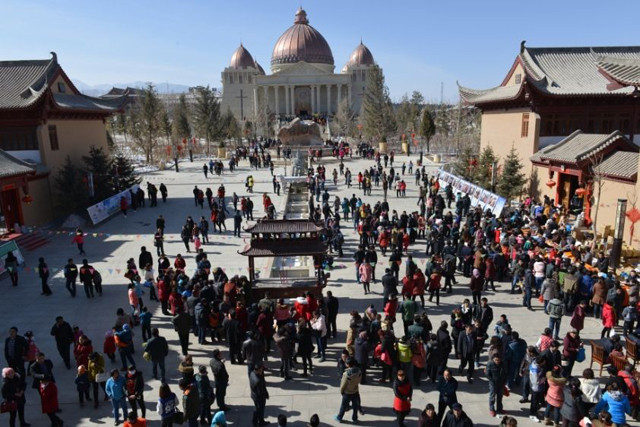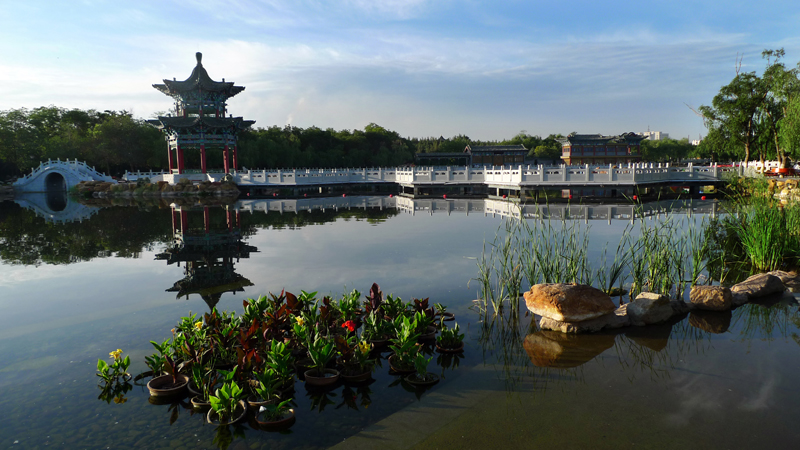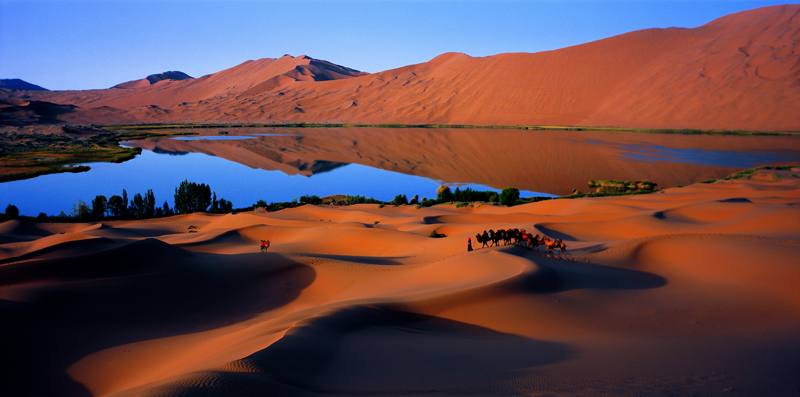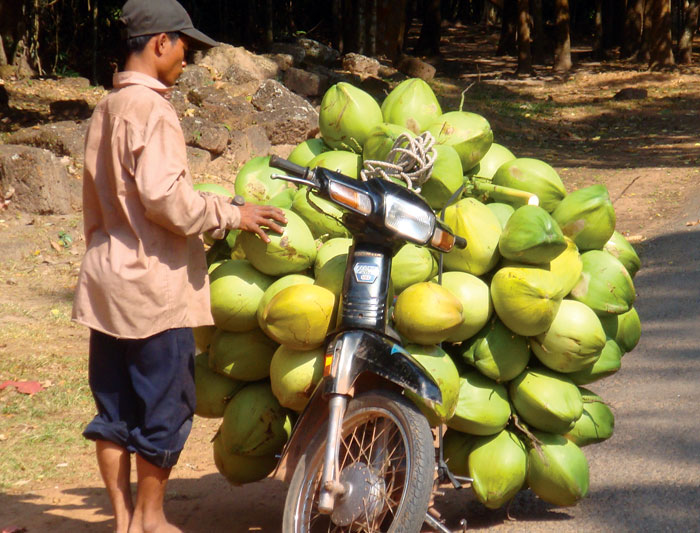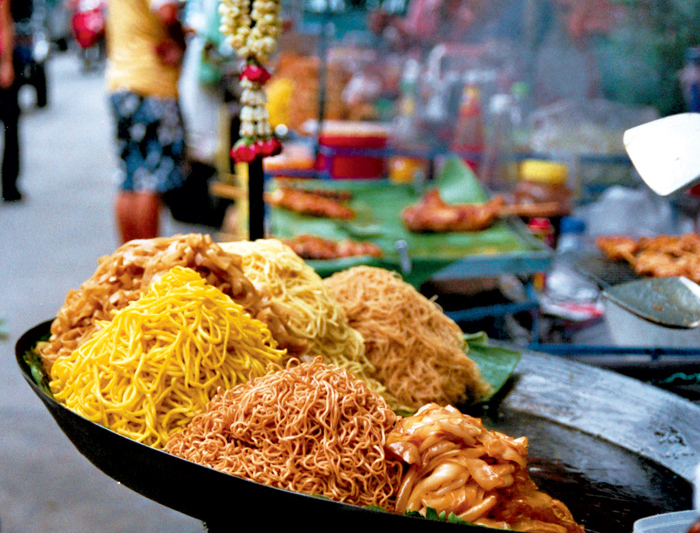Jinchang City
Jinchang, located in the east section of the Hexi Corridor of Gansu Province, is honored as “Nickel City of the Country" because it abounds with nickel and has a lot of nickel mines and enterprises. In January 2014, it was named as “National Garden City" by Ministry of Housing and Urban-Rural Development. The city covers a total area of 8896 km2. Its total population is 464 thousand. Jinchuang District and Yongchang County are under its jurisdiction. Jinchang has a long history. As far back as 4,000 years ago, in primitive clan society, human beings began to live here. In the Shang and Zhou dynasties, it was the pastureland of the Xirong nationality. From Autumn and the Warring States Periods to the Qin Dynasty, the Rouzhi nationality settled and pastured here. At the beginning of the Han Dynasty, King Xiutu of Hun ruled over the place. From Emperor Wu of the Western Han Dynasty, several counties were established here: Luanniao, Fanhe, Ligan, Xianmei, Yanzhi, etc. It waxed and waned during thousands of years. Jinchang has a continental temperate arid climate. So the whole area has adequate light, an arid climate and northwest wind all the year round. The temperature here varies greatly between four seasons. Frost season is quite long. Gales are frequent in spring. The temperature in the area is high in the north and low in the south; while precipitation is more in the south than in the north. The terrain slopes from southwest to northeast. The main landscape is mountains and plains. The Gobi, the oasis and the desert stretch from east to west. The imposing Lenglong Ridge with its branches in southwest Qilian Mountain is known as “Skyscraping Peaks". The Lenglong Ridge, the highest peak in the area, is 4,442 meters above sea level and covered by everlasting snow. Natural forests and alpine meadows are distributed throughout the mountain. Its vegetation rate reaches 75% and is an important water conservation area of Jinchang. From time immemorial there has been the verse “Snow on Qilian gleams white, grass on Yanzhi is a big cushion." The region has been a prestigious natural pasture. Jinchang is a newly developing tourist city along the ancient Silk Road. Its tourism resources are unique: the site reflecting early human activities such as Erba, Sanjiaocheng and Yuanchi; ancient buildings such as Bell and Drum Tower of the Ming Dynasty, Beihaizi, Wudang Mountain; Shrine of Tibetan Buddhist culture such as Shengrong Temple, Yunzhuang Temple; the ancient Liqian city site relating to the enigma of the lost Roman legion; summer resorts such as three major reservoir scenic spots: Jinchuan Gorge, Huangcheng and Xidahe River. Folk-custom activities and festivals in Jinchang mainly include the temple fair on 8th of the fourth lunar month, Liqian fish scales battle formation, Jiezi dancing, Roman legion’s battle formation, Animal fighting performance, and lanterns arrayed in “卍" in Mobola. These activities provide visitors opportunities to know about and experience the ancient customs. Liqian City Ruins
Liqian city ruins are located in the middle of Liqian Village and Jiaojiazhuang Village, Yongchang County, Jinchang. The ruins are 4 meters high, 4 meters wide at the foundation, and about 30 meters long. In the middle of the ruins there is a stone tablet into which are carved four big characters “Ruins of Liqian". In the 1970s, the ancient city wall was about 500 meters long, 5 to 6 meters high; and the top of the wall was so wide that cars could be driven on it. After the 1980s, local villagers took down the dirt of the city wall and used them as fertilizer or building material, so the better part of the wall was cut away. In 1990s, only a small part was left. In 1979, the villagers dug out pieces of grey pottery and Wuzhu coins of the Western Han Dynasty. In May 1993, a small-scale excavation was carried out near the ruins. Dozens of ancient relics such as iron pans, iron hammers, iron tripods and porcelain kettles were unearthed. Now the ruins are designated as a historical and cultural site under county government protection. Jinshui Lake (AAA)
Jinshui Lake scenic area is located to the east of Jinchang city. It covers over 236 hectares, and is the largest reclaimed water storage landscape in the North-West. The reservoir in the scenic area constituted by five lakes of different sizes is 60 hectares; its storage capacity is 2.3 million m3. The municipal sewage treatment plant uses the reservoir to store and utilize the reclaimed water. In turn, the reservoir is a project uniting storage, regulation and scenery in one, incorporating recreation, sightseeing, and ecological protection. The striking style of Jinshui Lake is “natural" and “rustic". The scenic area consists of different parts: Harmony in all Parties, Mist and Cloud on Liqian, the Standing Moor at Zhelai, Flying Dragon Beach, Heavenly Flowers Isle, Evening Song from Fishing Boat, Clear Water and Wood, Green Area at Riverside, Recreation Area, Activity Area for the Old, Ecological Education Area, and Outward bound Area. The scenic area provides the water for the irrigation urban and rural, as well as afforestation of city; at the same time it contributes to the realization of western Gobi cities’ afforestation. Jinchuan Park (AAA)
Jinchuan Park, built in 1983, is located in the center of Jinchang City. It covers an area of 30 hectares. In the middle of it is an artificial lake around which are a Viewing Area, a Rest and Tourist Area, a Play Ground, and a Management Area. The overall layout of the park is well arranged. Scenery here is complementary to each other. Unconventional buildings with lake and hills are united into a miniature of natural landscape. The artificial lake and artificial hill is the biggest landscape in the park. The surface of the lake is 34 hectares and divided by bridges and causeways on which is arch bridge and pavilions. The winding lake bank is interspersed with Taihu Stones. Along the bank are weeping willows and green grassland. The artificial lake consists of a Jade Pool, Eyebrow Cove, Danxia Lake and Still Lake. The center of the artificial lake is Danxia Lake with Green Spring Stone Ship on the east bank, Qingshuang Veranda on the west bank, and Fairies Gathering Pavilion and Guest Greeting Bridge on the north bank. The artificial hill is around the lake. Nanping Mount is in the southeast of Danxia Lake, with Meiling Mount in the northwest, and Skylark Mount in the north. They face to each other across the lake. And among them, Nanping Mount is the highest peak in the park. Climbing onto it, visitors can have a full view of the park. Badain Jaran Desert
Badain Jaran Desert, one of the four great deserts in China, is located to the north of Jinchang City. Its total area is 47 thousand km2. High Sand Mountain, mysterious singing sand, still lake and wetland constitute unique and charming scenery in Badain Jaran Desert. The odd peaks, the singing sand, the lake, the magic spring and the temple are “Five Wonders" in Badain Jaran Desert. The dunes here are in the form of huge waves in the sea or ancient towers because of the effects of wind. The area of Badain Jaran Desert takes up 39% of Alxa Right Banner’s total. Its relative height is 200 to 500 meters. It has the highest dune in China even in the world. The Singing Sand in Baori Tolgoi is very steep. The ridge of it, like a blade, rises and falls. The roaring of sands’ sliding can be heard miles away, hence the name of “Kingdom of Singing Sand". More than 113 lakes are scattered in the desert, among which 74 have water perennially and 12 are fresh-water lakes. The total area of these lakes is 327 km2. It is known as “An Abundant Place beyond the Mongolian Desert" because of its lush reeds, playing water birds, and gliding fish. At the north and southwest edges of the desert, there are rock paintings on Mandela Mountain which is honored as “living fossils in the art world." They record the early people’s hunting and farming activities. |
Jinchang City
December 21, 2016
VIEWED: 0
Recommended Products
see all-
Best of Vietnam & Cambodia
HKD 2130 + Book -
Cambodia & Thailand Traveller
HKD 2220 + Book
